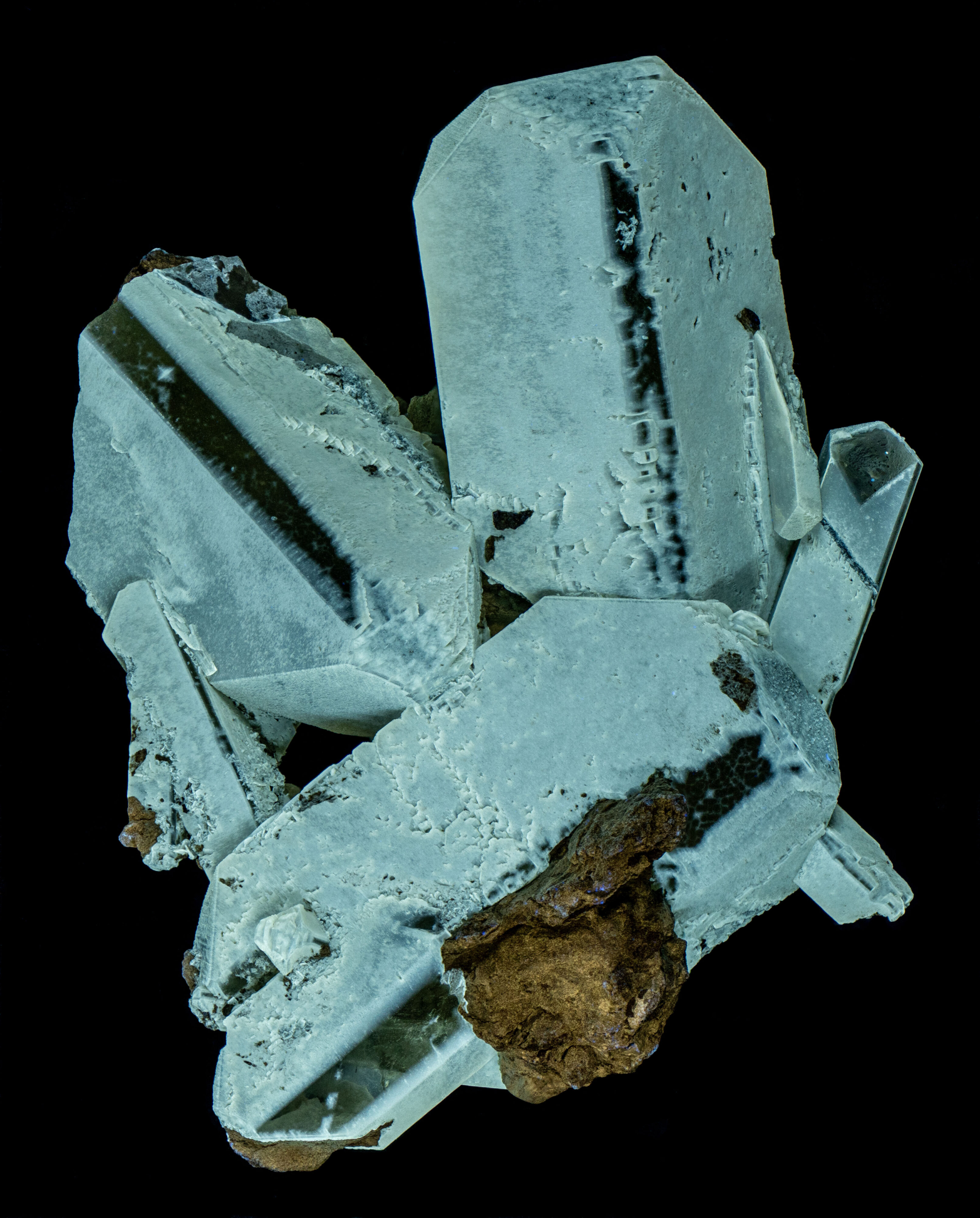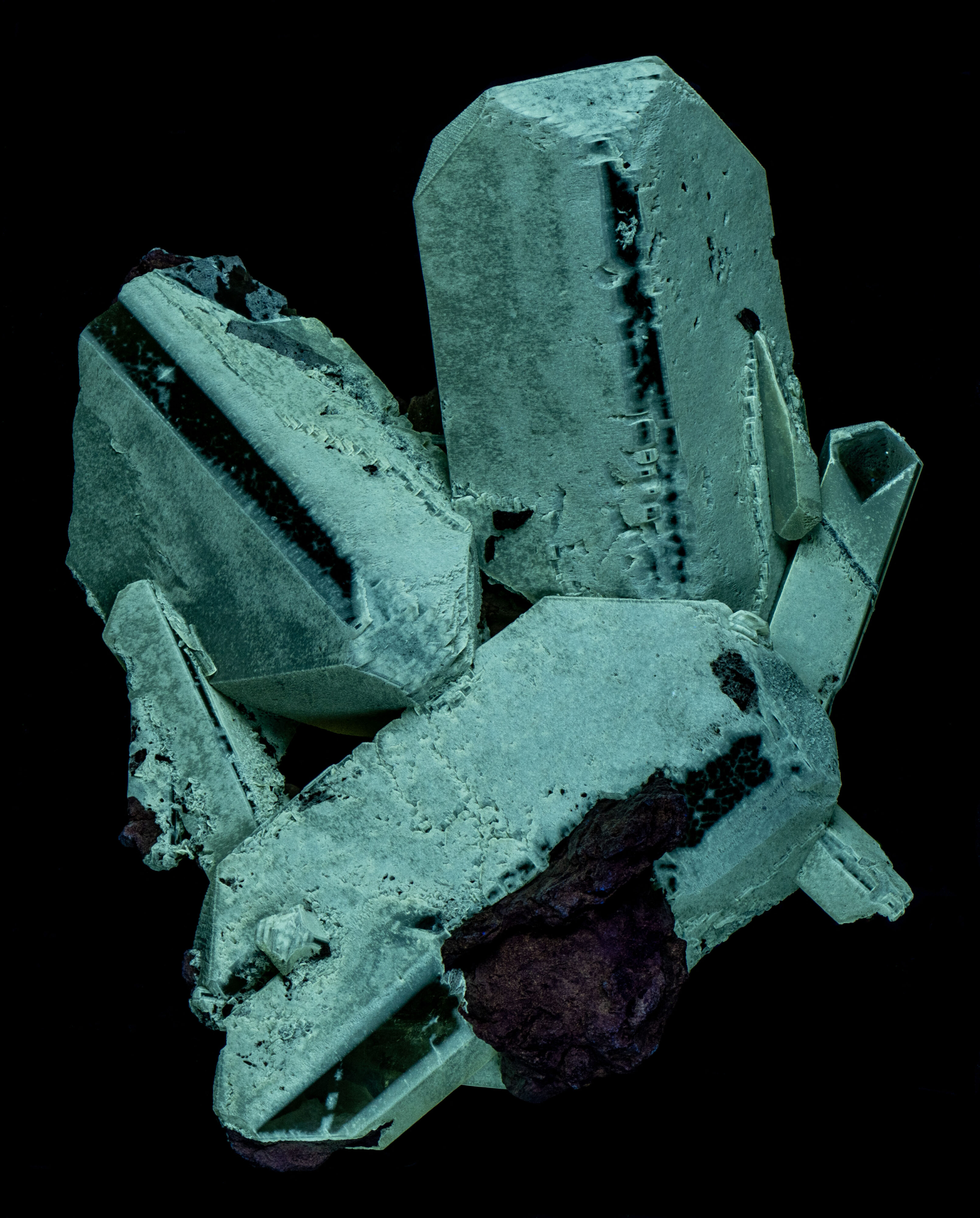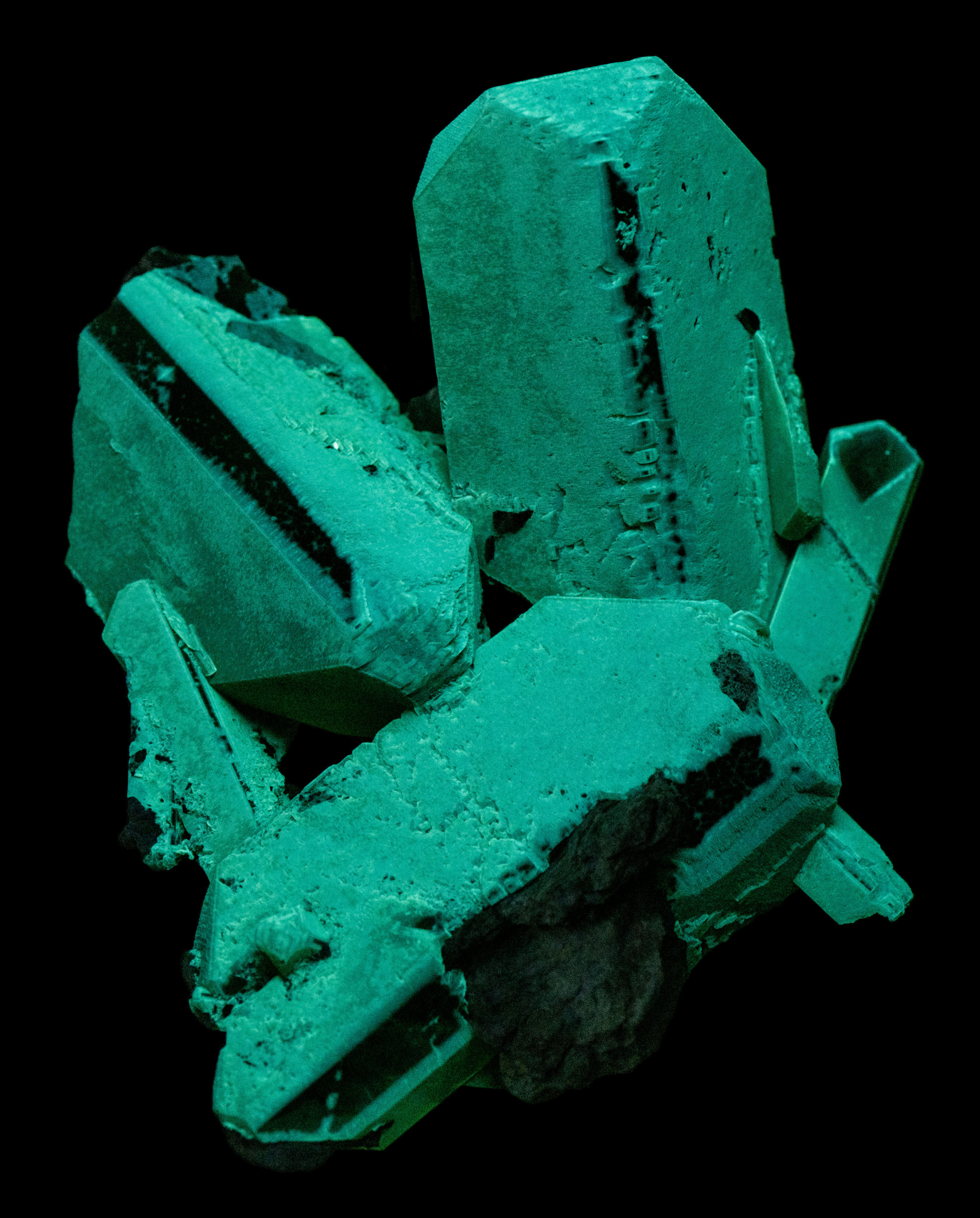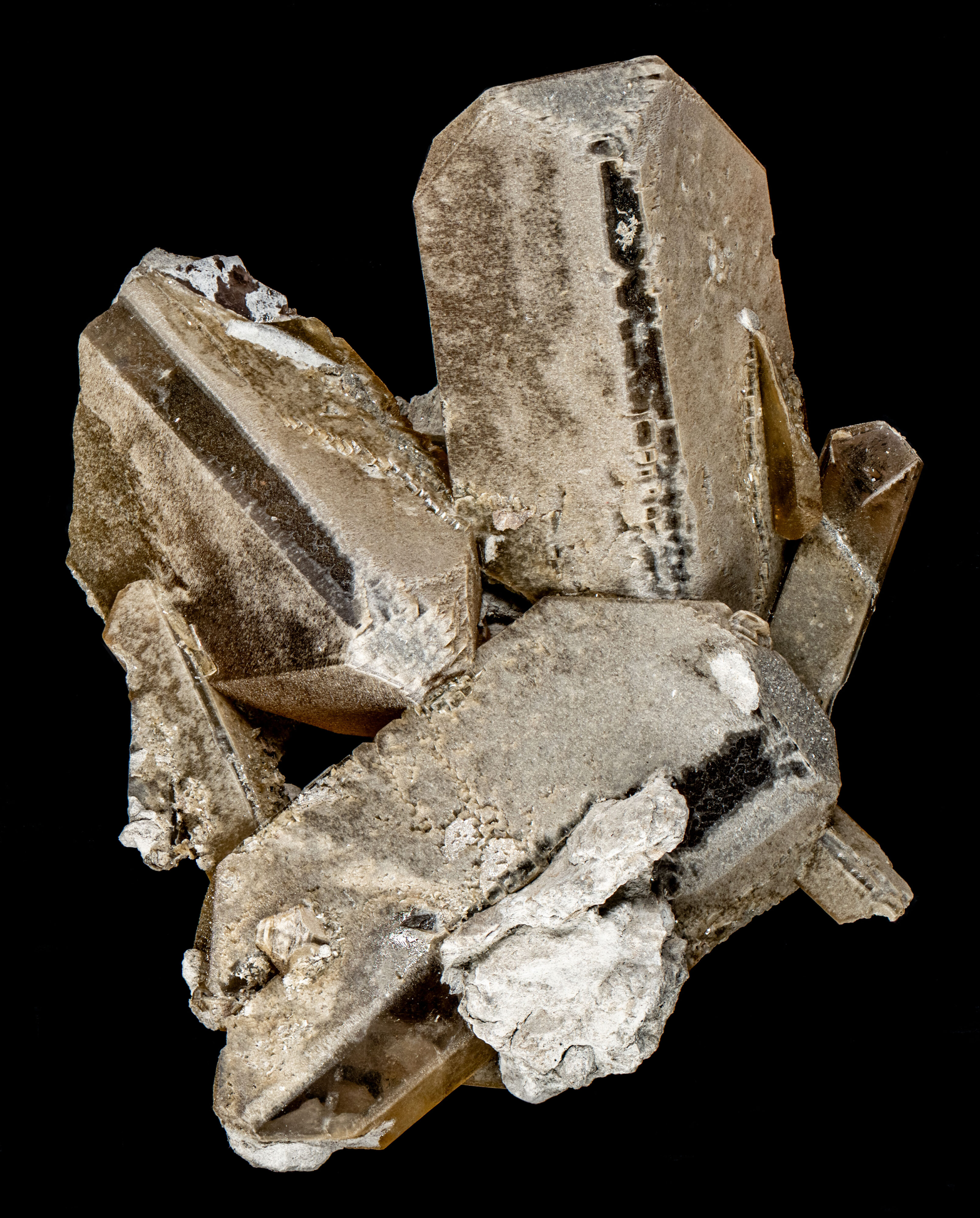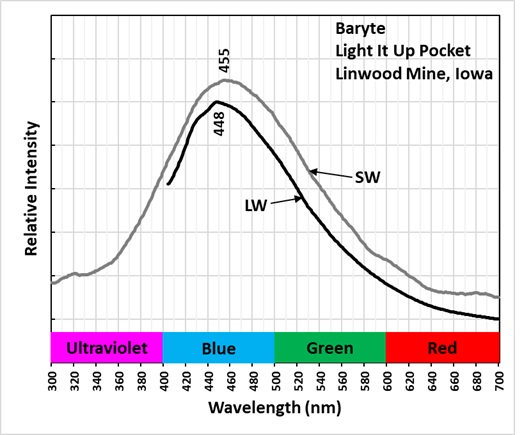Barite Crystals from the Linwood Mine, Iowa
Contributed by: Michael Crawford
Date: Aug 21st, 2025
Locality: Linwood Mine, Buffalo, Scott County, Iowa, USA (See on Mindat)
Size: 11.5 x 11.5 cm
Description:
A cluster of Baryte prismatic crystals from the Light It Up Pocket, Linwood Mine, Scott County, Iowa. The Linwood Mine is a former limestone quarry that transitioned to a room and pillar underground mine to extract high purity limestone. The bluish white fluorescence comes from a secondary coating on the crystals has a frosted appearance. A central narrow face of the largest crystals has no secondary coating and is non-fluorescent. The longwave fluorescence is followed by green afterglow. The shortwave fluorescence is followed by greenish white afterglow. The longwave and shortwave afterglow lasts for several seconds.
The emission spectra have broad peaks. The shortwave emission maximum is at 455 nm and the longwave emission maximum is at 448 nm. The fluorescence is activated by aromatic organic molecules. These molecules have a lot of conjugated double bonds whose electrons are easily moved from the ground singlet state to an excited singlet state at a higher energy level by exposure to UV light. According to quantum mechanics, the singlet state contains two electrons with opposite spins and when excited by UV light one electron moves to a high energy level of an excited singlet state. Excited singlet states are short-lived, so most electrons return to the original ground singlet state and the excess energy is emitted as a photon. The photon emission is the bluish white fluorescence we see with a peak around 450 nm.
Some electrons move from the excited singlet state to a slightly lower energy level known as the triplet state. The electron spin is flipped in the triplet state, and it now has the same spin as the electron left in the ground singlet state. Quantum mechanics forbids electrons of the same spin in the ground singlet state, so the electron in the triplet state must flip its spin to return to the ground singlet state. The electron must wait until the ambient thermal crystal lattice vibrations cause it to flip again before it can fall back down to its original state and emit a photon. The triplet state is at a lower energy level compared to the excited singlet state. Therefore, the energy of the photon emitted when the electron moves back to the ground singlet state from the triplet state is less. According to Planck’s Law, lower photon energy corresponds to a longer wavelength (green) for the phosphorescence. Temperature affects the time for the spin to flip and for the electron to return from the triplet state to its original singlet state. Cooling the crystal extends the phosphorescent time.
This type of fluorescence and phosphorescence activated by aromatic organic compounds occurs in several minerals that form in near surface, low temperature environments. The list of minerals include calcite, aragonite, selenite, celestine, fluorite, witherite, and colemanite.
Summary of luminescence responses:
Baryte (Mindat) (RRUFF)
- Fluorescence under Longwave (365nm LED) UV light: White
- Fluorescence under Shortwave (255nm LED) UV light: White
- Afterglow after exposure to Longwave (365nm LED) UV light: Green
- Afterglow after exposure to Shortwave (255nm LED) UV light: White

